Целью данного пособия Луговой А. Л. служит обучение студентов энергетических специальностей устной речи, чтению и переводу текстов по специальности.
Все тексты книги «Английский язык для студентов энергетических специальностей«, подобранны из оригинальной литературы, так же расположены в определенной логической последовательности: от описания отдельных деталей к объяснению работы различных приборов и далее – к описанию современных энергетических установок и электростанций, в том числе атомных. Данное пособие Луговой А. Л. «Английский язык для студентов энергетических специальностей» содержит серию тренировочных и контрольных упражнений (тестов), краткий грамматический раздел по грамматическим темам пособия с упражнениями, а также материалы для чтения и обсуждения прочитанного.
Предназначается для студентов энергетических специальностей ВУЗов и техникумов.
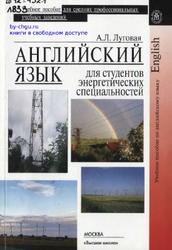
Примеры.
Answer the following questions:
1. What type of circuit has the main line and parallel branches?
2. What type of circuit is used in order to have the same value of current in all the elements?
3. What type of circuit is used in order to have the same value of voltage in all the elements?
4. What does a trouble in the main line result in?
5. What does a trouble in a branch result in?
6. What does no current in a series circuit result from?
7. How much does the sum of IR voltage drops equal?
8. What is the difference between series and parallel circuits?
Pair work. Put these questions to your groupmate. Let him/her answer them.
1. What is the ammeter used for?
2. What is the voltmeter used for?
3. What is the ohmmeter used for?
4. What terminals does a meter have?
5. Should the measured circuit be opened when the voltmeter is used?
6. Should the measured circuit be opened when the ammeter is used?
7. In what way should the voltmeter be connected to the circuit?
8. In what way should the ammeter be connected to the circuit?
9. What is the difference between a voltmeter and an ammeter?
10. What common meters are used to measure the values in a circuit?
Contents
Предисловие
1. Essential Course (Основной курс)
Unit 1
Addition and Subtraction
Unit 2
Multiplication and Division
Unit 3
Common and Decimal Fractions
Unit 4
Ohm’s Law
Unit 5
Electric Circuit
Unit 6
Series Circuit and Parallel Circuit
Unit 7
Meters
Unite
Resistors
Unit 9
Electric Cells
Unit 10
Capacitors
Unit 11
Conductors and Insulators
Unit 12
Transformers
Unit 13
Types of Current
Unit 14
Inductance and Mutual Inductance
Unit 15
Coupling
Unit 16
Filters
Unit 17
Electron Tubes
Unit 18
Use of Electron Tubes
Unit 19
Full-wave Rectifier
Unit 20
Push-pull Amplifier
Unit 21
Amplifier Stages in Series
Unit 22
Electromagnetic Relay
Unit 23
Fuses
Unit 24
Components of Electric Circuits
Unit 25
Electric Lines and Their Efficiency
Unit 26
Transmission Lines
Unit 27
Safety Earthing System. Electric Shock
Unit 28
Electric Motors
Unit 29
Faults of Motors and Ways of Their Repair
Unit 30
Electric Power Consumers and Power Systems
Unit 31
Substations
Unit 32
Hydroelectric Power Plants
Unit 33
Atomic Power Plant
Unit 34
Protection Against Environmental Pollution
2. Grammar Revision (Повторение грамматики)
Word Formation (Словообразование)
Suffixes of Nouns (Суффиксы существительных)
Suffixes of Verbs (Суффиксы глаголов)
Suffixes of Adverbs (Суффиксы наречий)
Suffixes of Adjectives (Суффиксы прилагательных)
Prefixes (Приставки)
Conversion (Конверсия)
Numerals (Числительные)
Pronoun One (Местоимение one)
The Verb (Глагол)
The English Tenses (Времена глагола)
Active Voice (Действительный (активный) залог)
Passive Voice (Страдательный (пассивный) залог)
Рекомендации по переводу
Полнозначные и служебные слова
The Verbals (Неличные формы глагола)
The Infinitive
(Инфинитив (неопределенная форма глагола))
The Participle (Причастие)
The Gerund (Герундий)
The Subjunctive Mood (Сослагательное наклонение)
The Emphatic Construction (Эмфатическая конструкция) Punctuation Marks (Знаки препинания)
3. Materials for Reading and Discussing
(Материалы для чтения и обсуждения)
Work with a Dictionary (Работа со словарем)
Texts and Assignments (Тексты и задания)
Assignments in Writing (Письменные задания)
Приложение. Irregular Verbs (Неправильные глаголы).
Бесплатно скачать электронную книгу в удобном формате, смотреть и читать:
Скачать книгу Английский язык для студентов энергетических специальностей, Луговая А.Л., 2009 - fileskachat.com, быстрое и бесплатное скачивание.
Скачать djvu
Ниже можно купить эту книгу, если она есть в продаже, и похожие книги по лучшей цене со скидкой с доставкой по всей России.Купить книги
Скачать книгу Английский язык для студентов энергетических специальностей, Луговая А.Л., 2009 - djvu - Яндекс.Диск.
Дата публикации:
Теги: учебник по английскому языку :: английский язык :: Луговая
Смотрите также учебники, книги и учебные материалы:
Следующие учебники и книги:
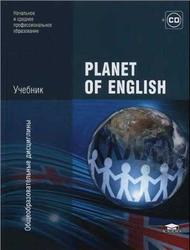 Английский язык, Planet of English, Безкоровайная Г.Т., Соколова Н.И., 2012 — Структура и содержание учебника позволяют обобщить материал, пройденный в средней школе, и обеспечить развитие знаний, навыков и умений на новом, … Книги по английскому языку
Английский язык, Planet of English, Безкоровайная Г.Т., Соколова Н.И., 2012 — Структура и содержание учебника позволяют обобщить материал, пройденный в средней школе, и обеспечить развитие знаний, навыков и умений на новом, … Книги по английскому языку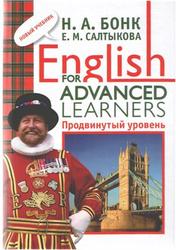 English for advanced learners, Продвинутый уровень, Бонк Н.А., Салтыкова Е.М., 2009 — Учебник предназначен для людей, достаточно свободно владеющих английским языком, и призван закрепить и значительно расширить приобретенные ранее знания и навыки. … Книги по английскому языку
English for advanced learners, Продвинутый уровень, Бонк Н.А., Салтыкова Е.М., 2009 — Учебник предназначен для людей, достаточно свободно владеющих английским языком, и призван закрепить и значительно расширить приобретенные ранее знания и навыки. … Книги по английскому языку Английский язык, 2 класс, Горячева Н.Ю., Ларькина С.В., Насоновская Е.В. — Учебник по английскому языку для учеников вторых классов. Пособие входит в комплект учебников для начальной школы Планета знаний . В … Книги по английскому языку
Английский язык, 2 класс, Горячева Н.Ю., Ларькина С.В., Насоновская Е.В. — Учебник по английскому языку для учеников вторых классов. Пособие входит в комплект учебников для начальной школы Планета знаний . В … Книги по английскому языку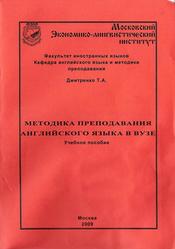 Методика преподавания английского языка в ВУЗе, Дмитренко Т.А., 2009 — Данное учебное пособие посвящено проблеме использования новых образовательных технологий в системе высшего профессионального образования. В пособии рассматриваются наиболее современные и … Книги по английскому языку
Методика преподавания английского языка в ВУЗе, Дмитренко Т.А., 2009 — Данное учебное пособие посвящено проблеме использования новых образовательных технологий в системе высшего профессионального образования. В пособии рассматриваются наиболее современные и … Книги по английскому языку
Предыдущие статьи:
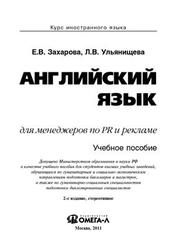 Английский язык для менеджеров по PR и рекламе, Захарова Е.В., Ульянищева Л.В., 2011 — Учебное пособие подробно освещает специфику английского языка в сфере PR и рекламы. Книга состоит из трех разделов и приложения (аудиодиск … Книги по английскому языку
Английский язык для менеджеров по PR и рекламе, Захарова Е.В., Ульянищева Л.В., 2011 — Учебное пособие подробно освещает специфику английского языка в сфере PR и рекламы. Книга состоит из трех разделов и приложения (аудиодиск … Книги по английскому языку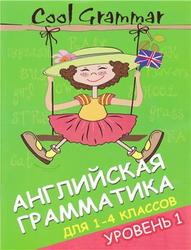 Cool grammar, Английская грамматика, 1-4 класс, Уровень 1, Наумова Е.А., 2013 — Новые книжки серии Cool Grammar представляют собой учебные пособия, которые соответствуют учебному плану, а тематики и сферы общения - действующим … Книги по английскому языку
Cool grammar, Английская грамматика, 1-4 класс, Уровень 1, Наумова Е.А., 2013 — Новые книжки серии Cool Grammar представляют собой учебные пособия, которые соответствуют учебному плану, а тематики и сферы общения - действующим … Книги по английскому языку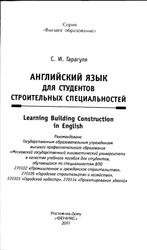 Английский язык для студентов строительных специальностей, Learning Building Construction in English, Гарагуля С.И., 2011 — Учебное пособие построено на базе ВУЗовского стандарта курса иностранного языка для неязыковых ВУЗов и рассчитано на профессионально-ориентированный этап обучения. Основная … Книги по английскому языку
Английский язык для студентов строительных специальностей, Learning Building Construction in English, Гарагуля С.И., 2011 — Учебное пособие построено на базе ВУЗовского стандарта курса иностранного языка для неязыковых ВУЗов и рассчитано на профессионально-ориентированный этап обучения. Основная … Книги по английскому языку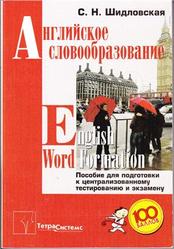 Английское словообразование, English Word Formation, Шидловская С.Н., 2010 — Цель пособия - систематизация теоретического и практического учебного материала по английскому словообразованию. В теоретической части рассматриваются смысловые функции суффиксов и … Книги по английскому языку
Английское словообразование, English Word Formation, Шидловская С.Н., 2010 — Цель пособия - систематизация теоретического и практического учебного материала по английскому словообразованию. В теоретической части рассматриваются смысловые функции суффиксов и … Книги по английскому языку




